Looking for the best books for 6 or 7 year olds to read? We’ve got exactly what you’re looking for with our recommended reading list for Year 2 students!
We’ve come up with a list of various picture books and Australian literature that you can read with your child, or that they can read independently.
You can peruse the texts we’ve listed and click on the titles to learn more information about the books! If you’re considering getting any of the texts for your child to read, you can see if they’re available from your child’s school library or your local one.
All the books we’ve compiled in the list have been recommended by NESA, so you can check out the syllabus!
Check it out!
Picture Books
Australian Literature
English Resources
Looking for reading lists for other year groups?
If you have a child in a different year group to Year 2, we’ve also got reading list for them! Check them out:
Year 1 | Year 3 | Year 4 | Year 5 | Year 6 | Year 7 & 8 | Year 9 | Year 10
You can also check out our guide to Year 2 English right here!
On the hunt for Reading Comprehension Worksheets?
Our offerings include a collection of reading comprehension worksheets meticulously crafted to accommodate a range of year levels. The exciting news? This collection is ever-evolving, with new additions consistently in the pipeline.
In the event that your child is navigating a distinct year level, rest assured – our repertoire features thoughtfully designed reading comprehension worksheets tailored to enrich their scholastic journey.
Discover the depth of our reading comprehension worksheet assortment, each one thoughtfully fashioned for different year groups:
Year 1 | Year 2
Picture Books
| Text | Author | About |
|---|---|---|
Beware of the Storybook Wolves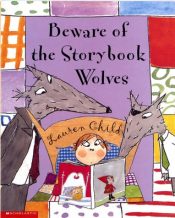 Image sourced from Goodreads | Lauren Child | Herb loves reading Little Red Riding Hood before bed. His favourite part is the happily-ever-after part, which happens just when he thinks things have gotten too dangerous. One night, Herb’s mother forgets to take the book away with her... |
Don't Forget the Bacon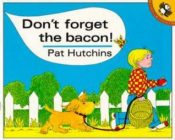 Image sourced from Goodreads | Pat Hutchins | A little boy is sent to the shops to buy food for his mother after being told what to buy. His mother tells him to buy six farm eggs, a cake for tea, a pound of pears, and don’t forget the bacon. He does his best, but he can’t seem to remember what to buy! |
Mirror Image sourced from Goodreads | Jeannie Baker | Two children on opposite sides of the world start their day, one in Western Australia, and one in Morocco. This story is an excellent discussion of cultural differences, and readers learn about Moroccan culture in comparison to that of Australia. |
My Dad Thinks He's Funny Image sourced from Penguin Random House | Katrina Germein | My Dad Thinks He’s Funny is a hilarious description of all the ‘dad jokes’ the narrator hears about, but he’s not impressed. This is a very relatable book for many Australian readers. |
Pearl Barley and Charlie Parsley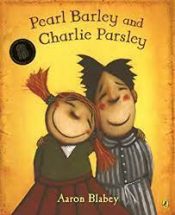 Image sourced from Goodreads | Aaron Blabey | This is the story of two friends who are complete opposites. One is adventurous and inquisitive, and the other is more peaceful and quiet. Together, they make an excellent team and help each other find courage and confidence. |
Previously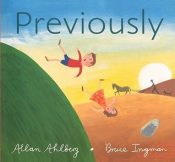 Image sourced from Goodreads | Allan Ahlberg | Previously is a reinvention of childhood stories, and is a great introduction to intertextuality. Classic stories such as Jack and the Beanstalk and Goldilocks are re-imagined as Allan Ahlberg writes what happens after the famous endings. |
The Rain Train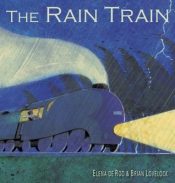 Image sourced from Goodreads | Elena De Roo | Late at night, a young boy listens to the calming sounds of the rain while safe inside a warm train. Readers are introduced to a range of sounds, making it a perfect book to read aloud. |
Who Sank the Boat? Image sourced from Penguin Books Australia | Pamela Allen | Wanting to have some fun, a cow, a donkey, a pig, a sheep and a mouse decide to go rowing. Pamela Allen directly asks the reader who sunk the boat, making it a great choice for an interactive book. |
Australian Literature
| Text | Author | About |
|---|---|---|
Discovery at Paradise Island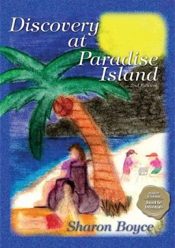 Image sourced from Goodreads | Sharon Boyce | Discovery at Paradise Island is a book featuring a character with physical disabilities which makes it an eye-opening experience for many young readers. It is written in a font designed to aid people with dyslexia, making it inclusive and accessible. |
How to Heal a Broken Wing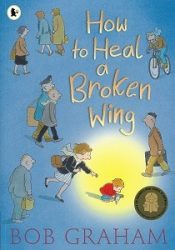 Image sourced from Reading Australia | Bob Graham | This book aims to foster a sense of compassion in young readers despite the sometimes cruel nature of the world. A family takes in a bird who has fallen and broken a wing, and their nurturing of the bird shows just how important a kind heart can be. |
Invisible Me Image sourced from Goodreads | Wendy Binks | Stripey is a bird whose friends and siblings are all very good at camouflage. Although he does not know how to blend in with his surroundings, he learns that this is a survival tactic and that they use to stay safe from predators. Throughout the book, Stripey learns this vital skill that will save his life. |
Sebastian Lives in a Hat Image sourced from Goodreads | Thelma Catterwell | This emotional story describes the compassion between humans and animals. An orphaned wombat is taken care of by humans after his mother is hit by a car. The humans find a woollen hat to remind Sebastian of his mother’s pouch. The story follows Sebastian’s growth after such a difficult time. |
Stellaluna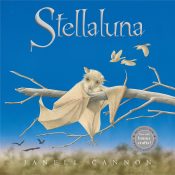 Image sourced from World of Books | Janell Cannon | After being knocked out of her nest, a baby bat called Stellaluna finds herself in a sparrow’s nest. She is allowed to stay with the sparrows as long as she eats the same food and doesn’t behave like a bat. This charming story teaches readers about identity and belonging. |
English Resources
Year 3 NAPLAN Preparation
If you didn’t already know, your child will be sitting their NAPLAN exams for the very first time next year! These tests will assess your child on:
- Reading & Writing
- Language Conventions
- Numeracy
To learn more about how all these tests work, you can have a read of our guide!
Reading is one of the skillsets your child will be assessed on when they sit the NAPLAN, and they will need to respond to simple imaginative texts, as well as simple information texts.
Your child is expected to be able to do the following:
| Text Type | What Students Are Expected To Be Able To Do |
|---|---|
| Simple Imaginative Texts | - Find directly stated information - Connect ideas across sentences and paragraphs - Interpret ideas, including some expressed in complex sentences - Identify a sequence of events - Infer the writer’s feelings |
| Simple Information (Informative) Texts | - Find directly stated information - Connect an illustration with ideas in the text - Locate a detail in the text - Identify the meaning of a word in context - Connect ideas within a sentence and across the text - Identify the purpose of the text - Identify conventions such as lists and those conventions used in a letter |
Reading Comprehension
Reading comprehension plays a big role in the NAPLAN Reading section, so it’s important to help develop your child’s ability to understand texts.
This means taking time to guide them through their reading and having conversations about what they’ve read, to see if they’ve grasped the meaning of the text!
When your child goes to read a book (especially if it’s one from our reading lists), you should look into:
- Getting them to read aloud
- Helping them find clues in the story
- Re-reading the book
- Having a chat about what was read
You can check out more tips on developing reading comprehension! You can also download our FREE Year 2 Reading Comprehension worksheets.
Spelling
As your child reads more and more books, they’ll be picking up on words they may have never encountered before.
Spelling is a skill you can work on in conjunction with reading, by listing down any unfamiliar words and testing your child on how to spell them!
However, if you’re looking for some lists that have already been made for Year 2 students, we’ve got a bunch of worksheets that you can download.
Download your own copy of our Year 2 spelling words worksheets for FREE!
Looking for some extra help for your child with English?
We have an incredible team of English tutors and mentors!
There are some upcoming syllabus changes to the NSW English curriculum! Read more here
We offer tutoring and mentoring for Years K-12 in a variety of subjects, with personalised lessons conducted one-on-one in your home or at one of our state of the art campuses in Hornsby or the Hills!
We’ve supported over 8,000 students over the last 11 years, and on average our students score mark improvements of over 20%!
To find out more and get started with an inspirational English tutor and mentor, get in touch today or give us a ring on 1300 267 888!
Alicia Hassell is a K-6 English Resource Designer at Art of Smart, currently completing her final year of a Bachelor of Education (Secondary) with teaching areas in French, English and EAL/D. Teaching is a big passion of hers, and she loves everything involving languages. In her spare time she likes to read a good book and sew her own clothes!



